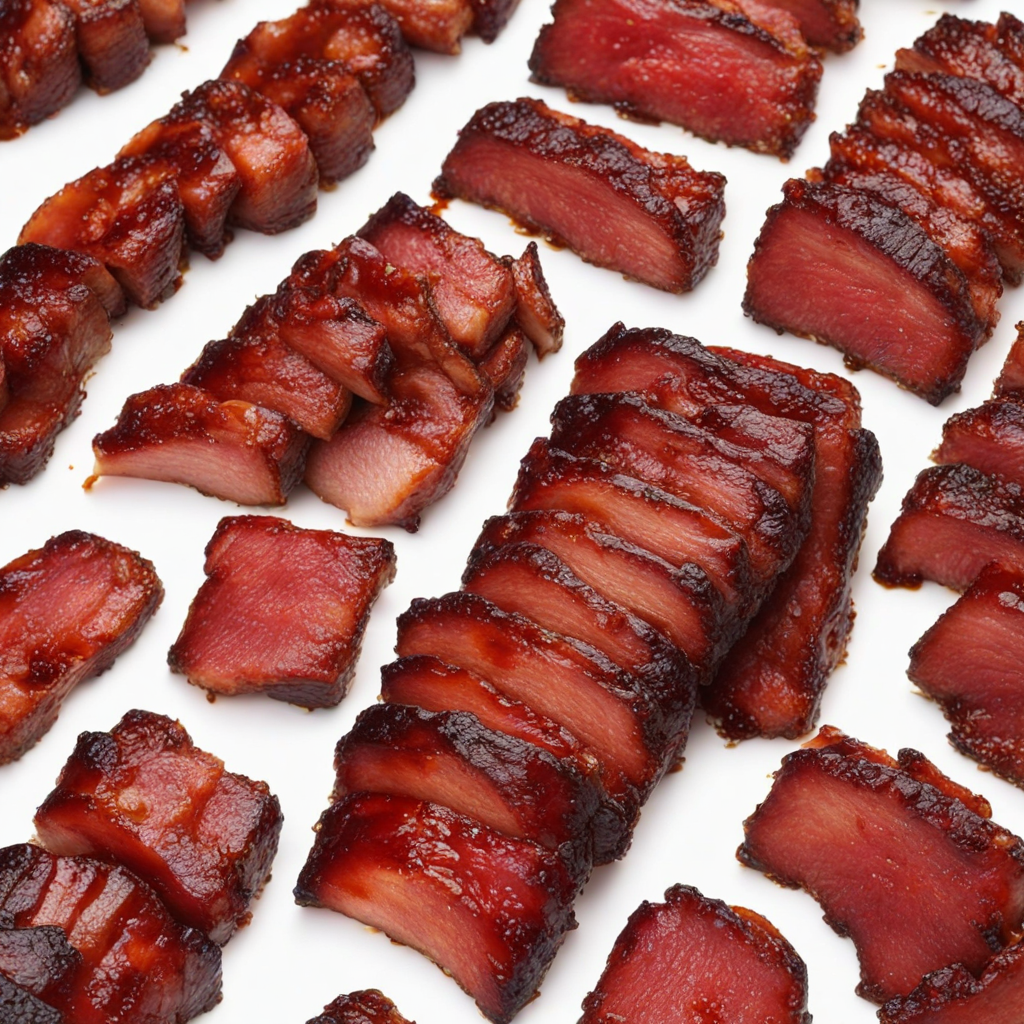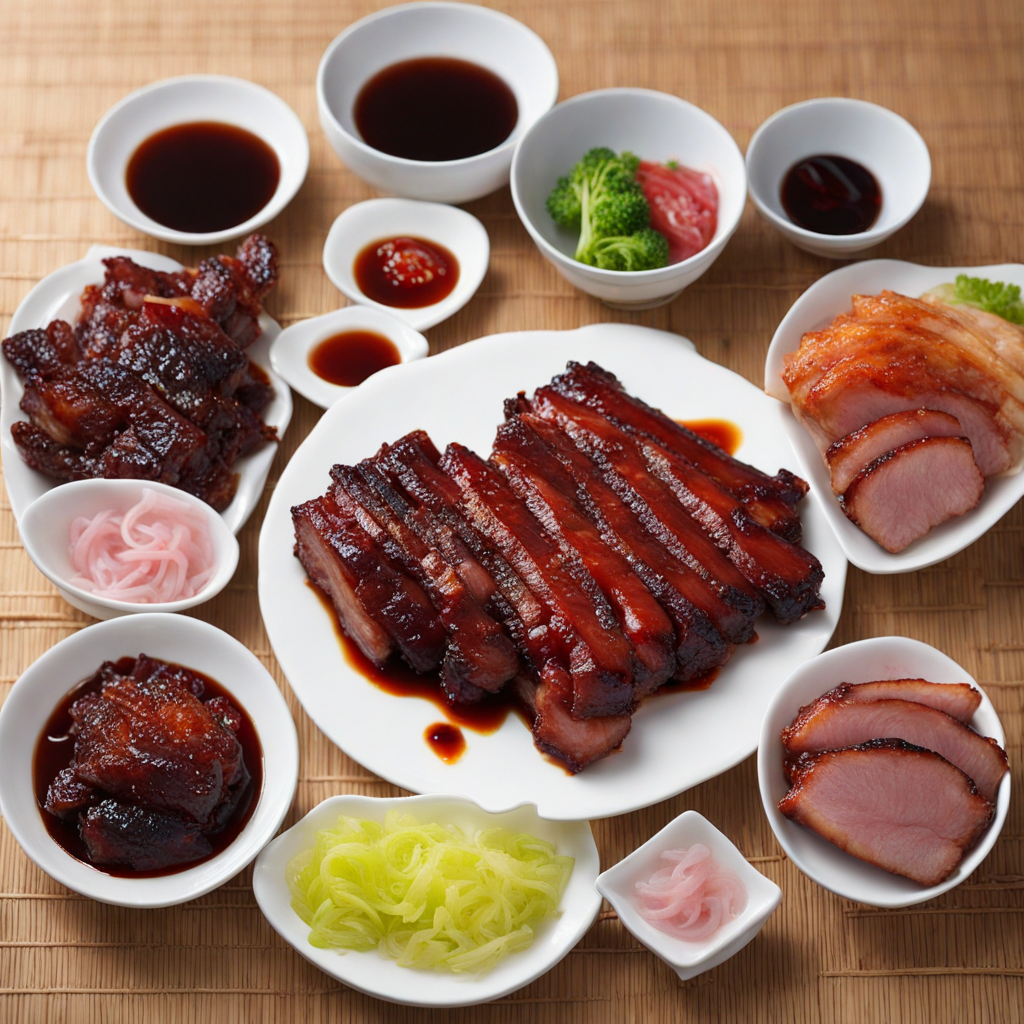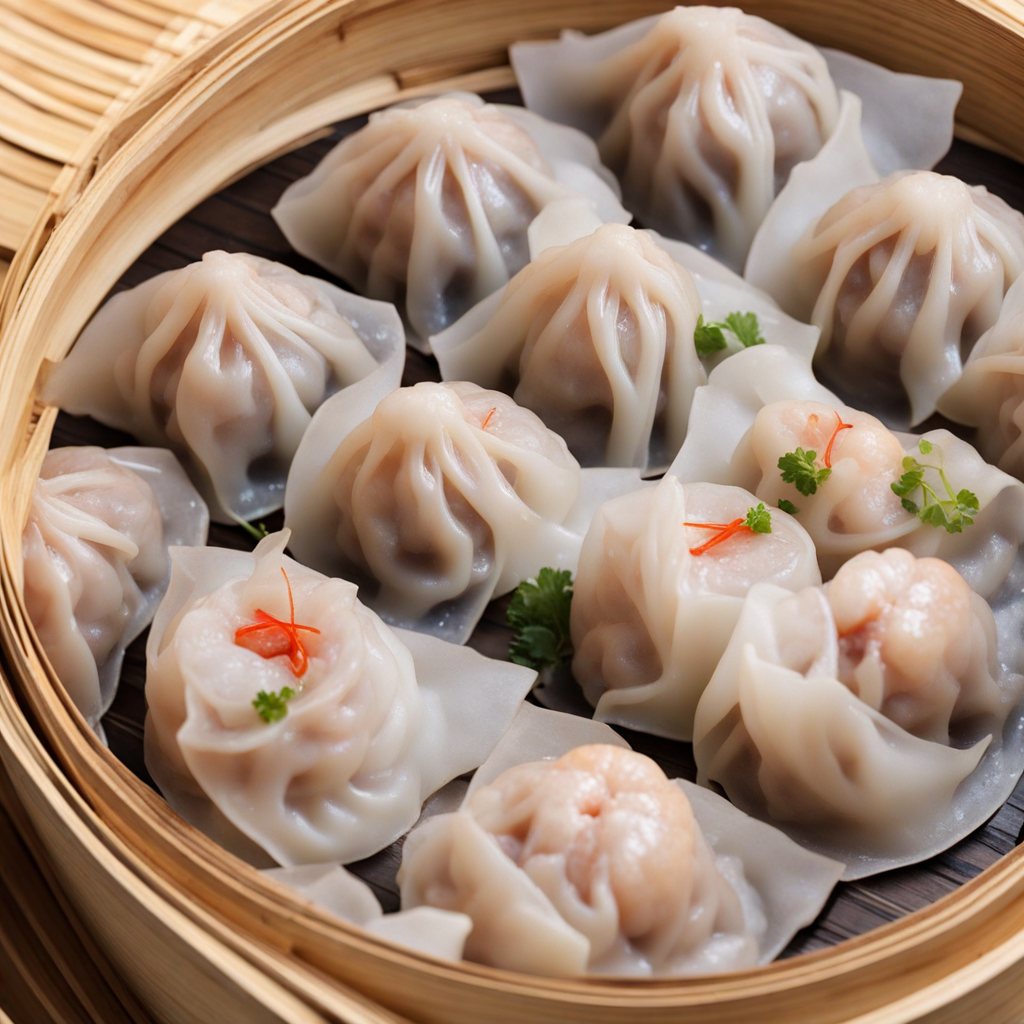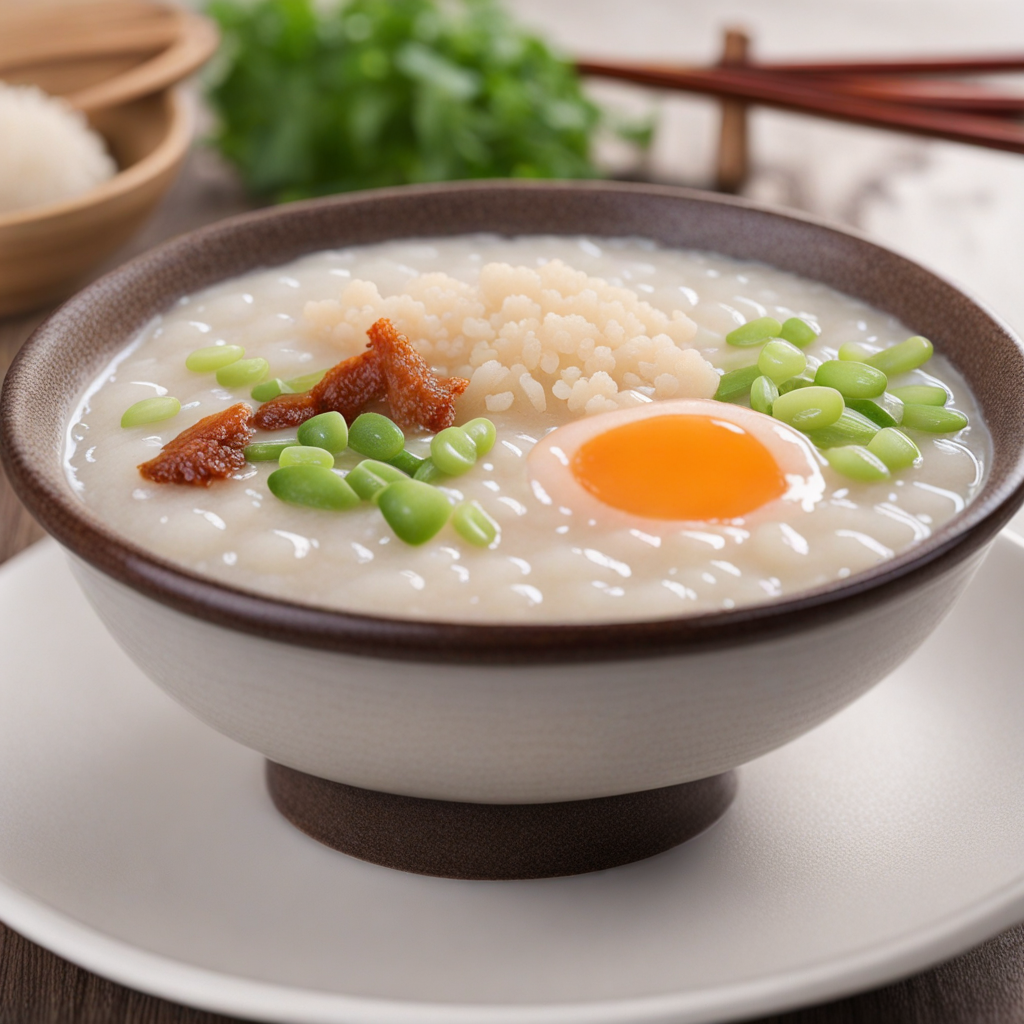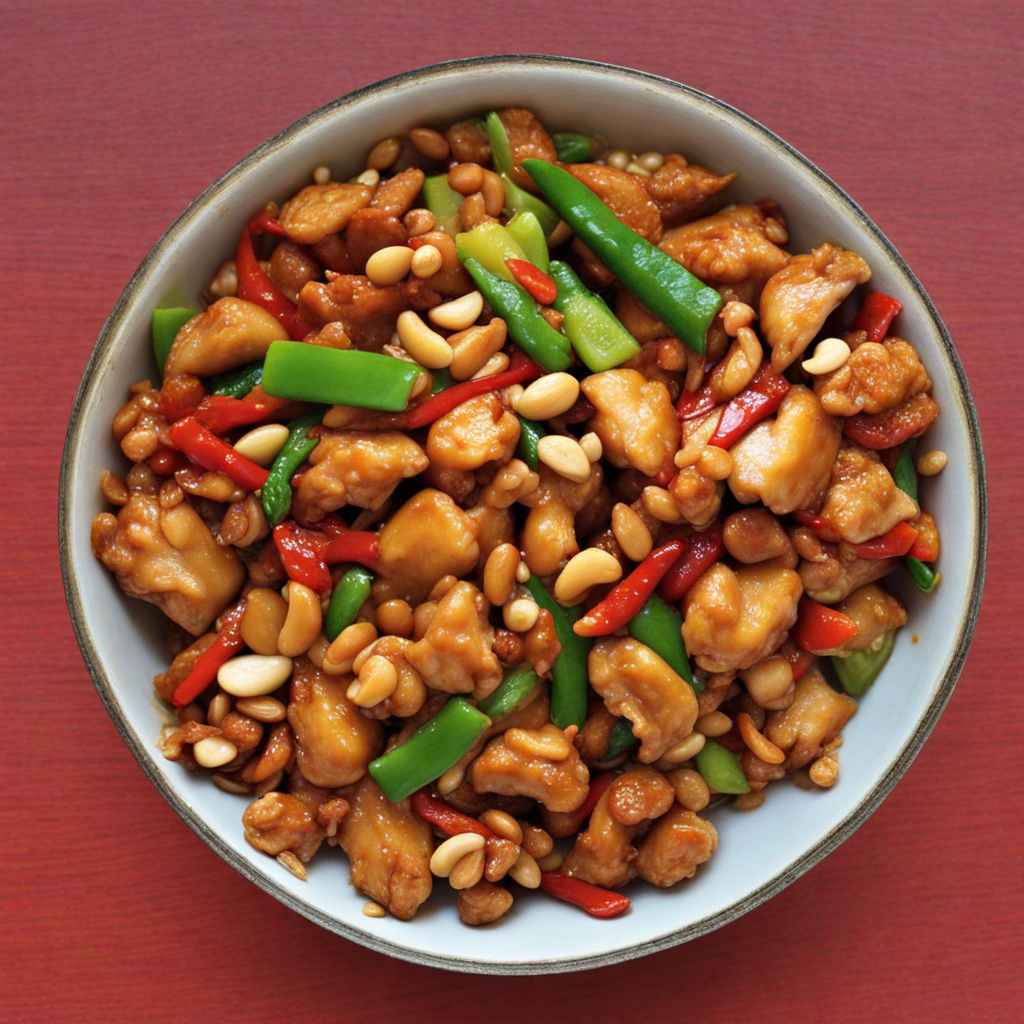Char Siu
Char Siu, also known as Chinese BBQ pork, is a delectable dish that hails from Cantonese cuisine. The name "Char Siu" translates to "fork roast," which refers to the traditional method of cooking the meat on skewers over a fire. This dish is typically made with pork, often the shoulder or belly, marinated in a rich blend of ingredients that include soy sauce, hoisin sauce, honey, five-spice powder, and red fermented bean curd. The marinade not only infuses the meat with a savory sweetness but also gives it a beautiful reddish-brown hue that is visually appealing and tantalizingly fragrant. The cooking process for Char Siu is as important as the marinade itself. After marinating for several hours or overnight, the pork is roasted at a high temperature, allowing the sugars in the marinade to caramelize and create a sticky, glossy glaze. This charred exterior contrasts beautifully with the tender, juicy interior, making each bite a delightful combination of textures. The aroma that wafts through the air during cooking is enough to whet anyone's appetite, creating an irresistible allure that draws you in. Char Siu is incredibly versatile and can be enjoyed in various ways. It is often served sliced thinly on a bed of rice or alongside noodles, and it makes a fantastic filling for bao buns or as a topping for stir-fried dishes. The sweet and savory notes of the meat, combined with its smoky undertones, create a unique flavor profile that is both comforting and exciting. For anyone looking to explore new culinary horizons, Char Siu offers a delicious glimpse into the world of Chinese cuisine, inviting you to savor its rich traditions and delightful taste.
How It Became This Dish
The History of 叉烧 (Char Siu): A Culinary Journey Through Time 叉烧, pronounced "char siu," is a quintessential dish in Cantonese cuisine, characterized by its sweet and savory flavor profile and its glossy, sticky exterior. This iconic barbecued pork has a rich history that reflects China's regional diversity, cultural significance, and culinary evolution. To truly appreciate char siu, one must delve into its origins, cultural importance, and how it has developed over time. Origins of Char Siu The name "char siu" literally translates to "fork roasted," describing the traditional cooking method that involves skewering strips of marinated pork with long forks and roasting them over a fire or in a closed oven. The origins of char siu can be traced back to the Southern Song Dynasty (1127-1279), although some food historians suggest that similar preparations may have existed even earlier. During this time, pork became a favored protein among the Chinese, particularly in the southern regions, where the climate and agricultural practices favored pig farming. The use of the fork for roasting is a testament to the ingenuity of early Chinese cooks who sought to maximize flavor while minimizing cooking time. Initially, char siu was likely a simple preparation, using salt and spices for seasoning. However, as trade flourished along the Silk Road and maritime routes, diverse ingredients began to influence local cuisines. The introduction of sugar, soy sauce, and five-spice powder transformed the basic recipe into the complex marinade we know today. Cultural Significance Char siu has become more than just a dish; it embodies the essence of Cantonese culinary culture. Traditionally, it is served as part of a larger meal or as a filling for other dishes, such as baozi (steamed buns) and noodle soups. In Chinese festivals and celebrations, char siu holds a special place. It is often featured in banquets and family gatherings, symbolizing prosperity and good fortune. The vibrant red color of char siu, achieved through the use of red fermented bean curd or food coloring, is considered auspicious and represents happiness and good luck. In Hong Kong, char siu has gained iconic status and is a staple in cha chaan teng (tea restaurants), where it is served with rice or noodles. The dish is so beloved that many families have their own secret recipes, passed down through generations. The culture of char siu extends beyond mere consumption; it is a source of pride for many Cantonese families who take great care in perfecting their techniques. Development Over Time As char siu gained popularity, various regional adaptations emerged, reflecting the diverse culinary landscape of China. In Guangdong Province, where char siu originated, the focus remained on the balance of sweet and savory flavors. However, as the dish spread throughout China and beyond, different variations began to evolve. In northern China, for example, char siu is sometimes prepared with different cuts of meat, such as lamb or beef, and the marinade may include more savory elements, such as hoisin sauce or fermented black beans. Conversely, in Western countries where Chinese communities have settled, char siu has adapted to local tastes. For instance, in the United States, char siu is often served in a more simplified form, such as in barbecue pork buns or as a filling for fried rice. The globalization of char siu has also been influenced by the Chinese diaspora, which began in earnest during the 19th century. As Chinese immigrants moved across the globe, they brought their culinary traditions with them, leading to the establishment of Chinese restaurants worldwide. Char siu became a beloved dish in many countries, often adapted to meet the preferences of local palates. In Australia, for instance, char siu is often served in a fusion context, combined with local ingredients or served as part of a modern Australian barbecue. This adaptability highlights the dish's universal appeal, transcending cultural and geographical boundaries. Modern Interpretations In contemporary cuisine, char siu has continued to evolve. Chefs experiment with new techniques and ingredients, blending traditional methods with innovative approaches. Some restaurants offer sous-vide char siu, where the pork is vacuum-sealed and cooked at a controlled temperature before being finished on a grill or in a hot oven. This method ensures a tender texture while retaining the essential flavors of the marinade. Health-conscious adaptations have also emerged, with chefs exploring alternative meats, such as chicken or plant-based proteins, while striving to maintain the essence of the dish. The rise of vegetarian and vegan diets has led to the creation of meat substitutes that mimic the sweet, smoky flavors of traditional char siu, allowing a broader audience to enjoy this iconic dish. Char Siu in Global Cuisine The global love for char siu has been further amplified by social media, where food enthusiasts share their experiences and recipes, creating an online community around this beloved dish. Cooking shows and food blogs often feature char siu, showcasing its versatility and inviting home cooks to try their hand at making this classic dish. In addition to its presence in restaurants and homes, char siu has also found its way into food festivals and cultural events, celebrating its heritage and showcasing its adaptability. As culinary enthusiasts continue to explore the flavors of char siu, the dish remains a symbol of Chinese culture, reflecting the rich tapestry of history, tradition, and innovation. Conclusion Char siu is much more than a dish; it is a cultural phenomenon that has stood the test of time. From its origins in ancient China to its global adaptations today, char siu tells a story of culinary evolution, cultural exchange, and community. Its sweet and savory flavors continue to captivate palates around the world, making it a cherished part of both traditional and modern cuisine. As we savor each bite of this delicious barbecued pork, we are not just enjoying a meal; we are participating in a rich history that spans centuries and crosses continents. The journey of char siu is a testament to the power of food to connect us through shared experiences and cultural heritage.
You may like
Discover local flavors from China


